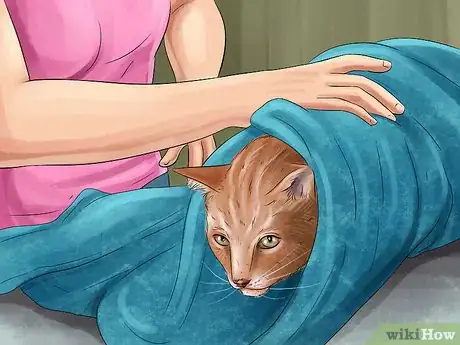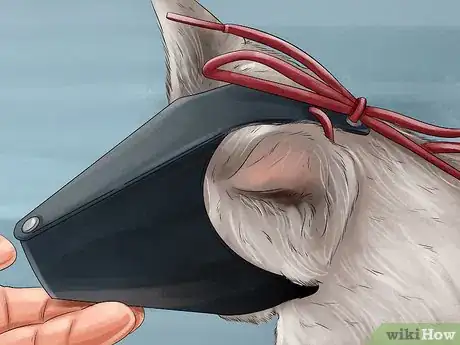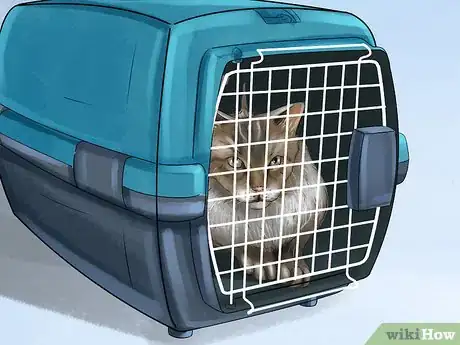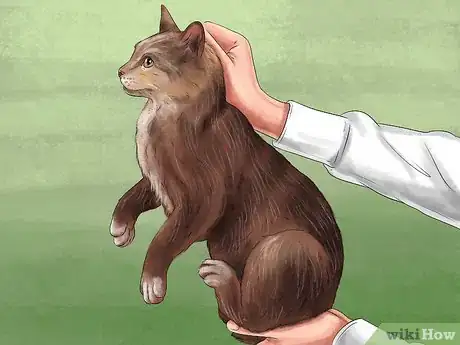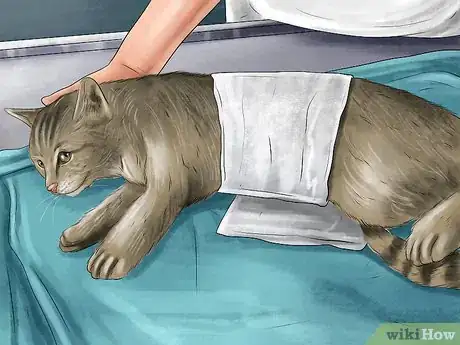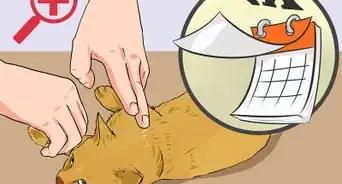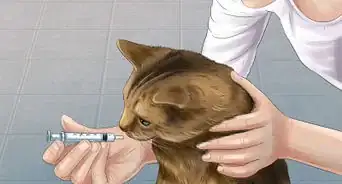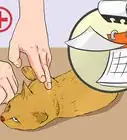This article was co-authored by Deanne Pawlisch, CVT, MA. Deanne Pawlisch is a Certified Veterinary Technician, who does corporate training for veterinary practices and has taught at the NAVTA-approved Veterinary Assistant Program at the Harper College in Illinois and in 2011 was elected to the board of the Veterinary Emergency and Critical Care Foundation. Deanne has been a Board Member of the Veterinary Emergency and Critical Care Foundation in San Antonio, Texas since 2011. She holds a BS in Anthropology from Loyola University and an MA in Anthropology from Northern Illinois University.
This article has been viewed 13,077 times.
Sometimes it is necessary to immobilize a cat that is frightened or injured. Even if your cat is normally friendly, it may be wild and unpredictable if hurt. Handling an injured cat may result in the cat biting you, and you should take all the precautions you can to avoid further hurting the cat or yourself. By restraining the cat and stabilizing any injuries, you can immobilize your cat safely and get it the care it needs.
Steps
Immobilizing a Cat with Restraints
-
1Wrap the cat in a pillowcase then put it in a box. One of the safest and easiest ways to immobilize a cat is by wrapping its body in a pillowcase. Place your cat on top of a pillowcase lying on a flat surface, several inches from the edge of the pillowcase. Cover the cat's body with the short side of the pillowcase, leaving its head out. Grab the other end of the pillowcase and pull it over the cat's body.[1]
- Make sure you do not restrict the cat's airway.
- Place your wrapped cat in a cardboard box.
-
2Use muzzles with caution. Muzzles can be challenging to put on a cat, due to the shape of most cats' faces and their propensity to use their teeth as a defense. You can purchase muzzles made specifically for cats.[2]Advertisement
-
3Put the cat in a pet carrier. If you are unsuccessful immobilizing the cat with a towel or muzzle, you can try placing the cat in a pet carrier. If necessary, you can immobilize the cat inside the box by gently tying the cat down with straps or rope.[3]
-
4Use food to lure an unwilling or scared cat into a carrier or box. If your cat is hesitant to enter a box or pet carrier, try using food to lure them inside. For example, you can leave a trail of cat treats starting near the opening of the carrier or box. You could also try placing a can of tuna in the box.
-
5Scruff the cat as a last resort. Scruffing replicates a mother cat picking up a kitten by grasping the skin on the back of a cat's neck. This can immobilize a cat, but should only be used in certain circumstances and after other methods fail. For example, you can scruff a cat to trim its nail, administer medications, or to administer minor first aid.[4]
- Never scruff a cat if you suspect a spinal injury.
- Always make sure you support the cat's weight with your other hand when you scruff a cat.
Immobilizing for Specific Injuries
-
1Splint injured limbs. If your cat has a broken or injured limb, you should splint it before attempting to move or further immobilize the cat. Once you splint the limb, you should take your cat to the veterinarian for treatment. Keep the cat in a small room or puppy crate until the injury heals.
- Do not delay taking the cat to the vet unless you have experience splinting. Immobilizing is likely to be painful for your cat, and it may bite. Taking the cat to the vet is most important and should be prioritized.
-
2Lay a cat with suspected spinal injuries on a board. If you think your cat has a spinal injury, you must seek veterinary care immediately. Find a sturdy board and gently lay the cat on its side on the board.[5]
-
3Wrap a cat with a head injury in a towel. If your cat has a head injury, you should take it to the vet for a thorough examination. Use a towel to immobilize the cat prior to transporting it to the veterinarian.[6]
References
- ↑ http://www.vetstreet.com/our-pet-experts/towel-wrap-your-cat-in-5-scratch-free-steps
- ↑ https://vcahospitals.com/know-your-pet/first-aid-in-cats
- ↑ https://vcahospitals.com/know-your-pet/first-aid-in-cats
- ↑ http://www.cathealth.com/how-to/how-to-scruff-your-cat
- ↑ http://www.petplace.com/article/cats/diseases-conditions-of-cats/brain-spinal-cord-nerves/spinal-trauma-in-cats
- ↑ http://www.cat-health-detective.com/catfirstaid.html
About This Article
If you need to immobilize your cat because it’s frightened or injured, one of the safest ways is to gently wrap its body in a pillowcase. If you’re worried about it biting you, you can put a cat muzzle over its mouth to protect yourself. Alternatively, you can put your cat in a pet carrier to immobilize it. If you do use a carrier, try putting a bowl of food or cat treats in it to lure it inside. If neither of these methods work, you can scruff your cat by grasping the skin on the back of its neck. However, only do this in certain circumstances, like to trim its nails and administer medications, and always support its weight with your other hand. For more tips from our Veterinary co-author, including how to immobilize your cat for specific injuries, read on!
